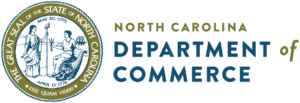Massive Transmission Projects Set to Boost Wisconsin’s Energy Landscape
In an unprecedented move, Wisconsin is poised to benefit from an influx of $4.1 billion through six key transmission projects, as greenlit by the Midcontinent Independent System Operator (MISO), marking the most extensive portfolio in the Midwest’s energy grid history.
MISO’s ambitious plan, disclosed in December, involves 488 transmission ventures stretching over 5,000 miles and covering 15 states, with a staggering $21.8 billion dedicated to 24 long-range transmission projects. Wisconsin will host six of these critical projects, which include new transmission lines from Minnesota and Illinois, fresh substations, and upgrades to existing ones, as reported by the Union of Concerned Scientists.
These developments are expected to create between 4,000 and 12,257 jobs, contributing $817 million to $4.5 billion to the economy. According to James Gignac, Midwest senior policy manager for Climate and Energy at the Union of Concerned Scientists, “The renewable energy that will ultimately connect to these new transmission lines will bring additional jobs by the tens of thousands and infrastructure investments by the billions.”
The nonprofit Clean Wisconsin anticipates that MISO’s projects will facilitate at least 6.6 gigawatts of clean energy in the state, effectively doubling Wisconsin’s current production. Ciaran Gallagher, Energy & Air Manager for Clean Wisconsin, emphasized the importance of upgrading transmission infrastructure to transition smoothly from fossil fuels to renewable energy.
Gallagher noted the strategic siting of clean energy sources in rural regions to leverage vast spaces for solar panels and wind turbines, contrasting previous practices of placing fossil fuel plants near urban centers. She highlighted, “By relying on more renewable energy, we do need to be able to draw from different geographic areas and move that electricity across the footprint in bigger ways.”
Looking ahead, the transmission lines sanctioned by MISO are projected to be operational by 2032 or 2034. Gallagher described the initiative as “a big investment” and “a long-term investment,” with three projects already in regulatory proceedings with the Public Service Commission of Wisconsin.
Debate Over Transmission Line Legislation
American Transmission Co. (ATC), Wisconsin’s primary transmission utility, finds itself deeply involved, with four of the six projects entirely within its service area. Bob McKee, ATC’s executive director of Strategic Projects, mentioned that MISO has yet to finalize which entities will construct these projects.
In the legislative arena, ATC plans to lobby for a bill granting transmission line owners the right of first refusal to connect to their existing infrastructure. A similar proposal passed the state Assembly previously but was not voted on in the state Senate. Ellen Nowak, ATC’s vice president of state and federal affairs, expressed optimism about gaining more support in the next session, despite previous resistance from various consumer, clean energy, and conservative groups.
Nowak warned that without such legislation, competitive bidding could prolong project timelines and increase costs for ratepayers. She argued, “When we’re seeing increased pressures and prices on so many other things in our lives and businesses, this is one way where we can help Wisconsinite save some money.”
Regardless of legislative outcomes, McKee assured that the projects will bolster Wisconsin’s economy and enhance the electric grid’s reliability, supporting the state’s growth and development. “We’re excited about this set of projects and the value that it’ll bring to our customers in the state,” he concluded.
Wisconsin Public Radio, © Copyright 2025, Board of Regents of the University of Wisconsin System and Wisconsin Educational Communications Board.





